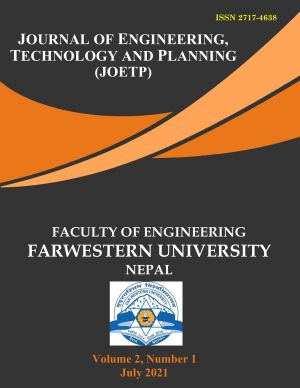A Concept of Optimum Forest Area for the Sustainable Development of Nepal
DOI:
https://doi.org/10.3126/joetp.v2i1.39227Keywords:
Conservation, Infrastructure development, Optimum forest area, Planning, Sustainable development goalsAbstract
Forest sector was badly suffered due to anthropogenic activities in the last two centuries before it is getting revitalized due to serious conservation efforts particularly after the Earth Summit in 1992. In order to expedite the development efforts by being considerate to the environment of the planet we live, United Nations has adopted seventeen sustainable development goals (SDGs) to be achieved by 2030. Sustainable development aims for harmony among physical, social and environmental development, and hence, guides for finding a balanced approach of development and conservation. This paper highlights the need for finding a balance between infrastructure development and forest conservation initiatives in Nepal with a focus of attaining SDGs by 2030. The economic status of Nepal is reviewed along with the plans, policies and trends of forest conservation. It highlights the need for a system perspective in which forest conservation is a component of the overall objective of sustainable development. A theoretical framework of optimum forest area for Nepal is presented by considering the contributions and obstacles of the forest sector towards attaining SDGs. Rather than focusing on complicated mathematical models; this paper presents a simple and practical concept of gauging the attainment of SDGs by a single index that may be useful to planners. The optimum forest area for Nepal has not been assessed and will be a scope of future studies. Once the idea of optimum forest area is adopted, major breakthroughs can be expected towards attaining SDGs in Nepal.
Downloads
Downloads
Published
How to Cite
Issue
Section
License
Copyright © Faculty of Engineering, Far Western University

